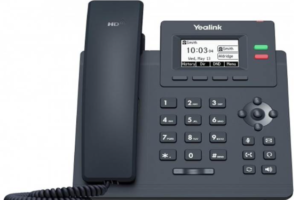In the world of content management systems (CMS), there are several popular options, each with its unique strengths. Among them, Wagtail has emerged as a standout choice for Python Django Wagtail developers and content editors who are looking for a flexible, scalable, and developer-friendly CMS. Built with Python and Django, Wagtail is an open-source CMS that provides a streamlined experience for creating dynamic and content-rich websites. In this article, we’ll dive deep into Wagtail, exploring its features, benefits, and how it compares to other CMS platforms.
What is Wagtail?
Wagtail is an open-source CMS built on top of Django, one of the most popular web frameworks for Python. Launched in 2014, Wagtail is designed to be flexible, fast, and easy to use. It’s primarily aimed at developers who need a CMS that can be customized and extended while providing a smooth experience for content editors.
One of the key features of Wagtail is its focus on a clean, user-friendly interface for content creators, making it easy to manage and publish content. It’s often praised for its speed, scalability, and the ability to handle complex content structures.
Key Features of Wagtail
1. Developer-Friendly
Wagtail’s foundation on Django makes it a powerful tool for developers. Django is a well-known Python web framework that encourages clean, reusable, and maintainable code. Wagtail inherits many of Django’s features, such as its strong security model, scalability, and modularity. This makes Wagtail an excellent choice for developers who are already familiar with Django or those who need to build custom websites with advanced functionality.
Wagtail also provides a flexible and extensible architecture. Developers can create custom content types, integrate with third-party applications, and extend the CMS with custom features. This level of customization ensures that Wagtail can be adapted to fit any project’s specific needs.
2. User-Friendly Admin Interface
While Wagtail is designed with developers in mind, it doesn’t compromise on the user experience for content editors. The admin interface is clean, intuitive, and easy to navigate, allowing content creators to focus on what matters most: creating and managing content.
The interface features a drag-and-drop page builder, making it easy to rearrange content blocks and add new elements to a page. The editor is highly customizable, so organizations can tailor the experience to fit their workflows and requirements.
3. Flexible Content Management
Wagtail is designed to handle complex content structures, which is ideal for websites that need to manage large amounts of content. Wagtail’s flexible content model allows developers to define custom page types, content fields, and relationships between content elements. This makes it easy to manage everything from simple blogs to complex multi-level websites.
Wagtail also supports content versioning, allowing content editors to track changes and revert to previous versions if needed. This is particularly useful for teams working on large projects with multiple contributors.
4. Multilingual Support
Wagtail offers built-in support for multilingual websites. With its flexible page model, you can easily create content in multiple languages and manage translations. The CMS also supports language-specific URLs, making it easy to structure your site for international audiences.
For businesses or organizations operating in multiple countries, this feature is essential for reaching a global audience while maintaining a consistent user experience across different languages.
5. Rich Media Support
Wagtail makes it easy to manage and display media on your website. The CMS supports a wide range of media types, including images, videos, documents, and audio files. Content editors can upload media directly through the admin interface, and the CMS automatically generates thumbnails and image sizes for responsive design.
Wagtail also integrates with cloud-based storage solutions like AWS S3, allowing for scalable media management. This is particularly useful for websites with large media libraries or those that need to deliver media-heavy content.
6. SEO Optimization
Search engine optimization (SEO) is a critical factor for any website’s success. Wagtail provides several built-in tools to help optimize your content for search engines. The CMS automatically generates clean and SEO-friendly URLs, and it allows you to customize page metadata, including titles and descriptions.
Additionally, Wagtail’s flexibility means you can easily integrate with third-party SEO tools and plugins to further optimize your site’s performance.
7. Extensibility with Plugins
One of Wagtail’s strengths is its extensibility. Developers can easily create custom plugins to add new features and functionality to the CMS. Whether you need to integrate with external APIs, add custom content types, or extend the admin interface, Wagtail provides the tools needed to build a tailored solution.
The Wagtail ecosystem also includes a growing number of third-party plugins, which can be easily installed to add additional functionality without writing custom code.
8. Security
Security is a top priority for any CMS, and Wagtail takes this seriously. Built on Django, Wagtail inherits the security features of the framework, including protection against SQL injection, cross-site scripting (XSS), and cross-site request forgery (CSRF). The CMS also includes tools for managing user permissions and roles, ensuring that content editors and administrators have the appropriate level of access.
Wagtail also provides regular updates and security patches, ensuring that your website stays secure over time.
Benefits of Using Wagtail
1. Speed and Performance
Wagtail is known for its speed and performance, both in terms of content management and website rendering. The CMS is optimized for fast page loads and efficient content delivery, ensuring a smooth experience for both content creators and website visitors.
Wagtail’s use of Django’s ORM (Object-Relational Mapping) system allows for efficient database queries, making it a suitable choice for websites with large amounts of content. Additionally, the CMS supports caching mechanisms that can further improve performance.
2. Scalability
Wagtail is built to scale. Whether you’re managing a small blog or a large enterprise website, Wagtail can handle the demands of growing businesses. The CMS can be easily integrated with cloud services, load balancing solutions, and content delivery networks (CDNs) to ensure that your site can handle high traffic volumes.
As your website grows, Wagtail’s flexible content model allows you to add new content types and features without disrupting the existing structure of your site.
3. Active Community and Documentation
Wagtail has a vibrant and active community of developers, designers, and users who contribute to the CMS’s growth and improvement. The community provides a wealth of resources, including tutorials, forums, and documentation, making it easy to get started with Wagtail and find solutions to common issues.
The official Wagtail documentation is comprehensive and well-maintained, providing step-by-step guides for everything from installation to advanced customization.
4. Open-Source and Free
Wagtail is completely open-source and free to use, making it an attractive option for businesses and developers on a budget. The CMS’s open-source nature also means that you have full control over your website’s code, allowing you to customize and extend it as needed.
Because Wagtail is open-source, you can also contribute to its development, whether by reporting bugs, submitting patches, or developing new features.
5. Excellent for Custom Websites
Wagtail is an excellent choice for custom websites that require a high degree of flexibility and customization. Whether you need a complex content structure, custom integrations, or a unique user interface, Wagtail provides the tools to create a tailored solution.
How Wagtail Compares to Other CMS Platforms
Wagtail is often compared to other popular CMS platforms like WordPress, Drupal, and Joomla. While each of these platforms has its strengths, Toronto Wagtail developers stands out in several areas:
1. Developer-Focused CMS
Unlike WordPress, which is designed for a broad audience, Wagtail is built with developers in mind. It’s ideal for projects that require custom features, complex content models, and integration with other systems. While WordPress is highly user-friendly, Wagtail offers more flexibility and control for developers.
2. Better for Customization
While Drupal is also known for its flexibility, Wagtail’s integration with Django makes it easier for developers to create custom solutions. Wagtail allows for greater control over the content model, the admin interface, and the overall website structure.
3. Simpler User Interface
Compared to platforms like Joomla and Drupal, Wagtail offers a simpler and more intuitive user interface for content editors. Its drag-and-drop page builder and clean design make it easier for non-technical users to manage content without needing to understand the underlying code.
Conclusion
Wagtail is a powerful, flexible, and developer-friendly CMS that offers a great user experience for both developers and content editors. Its integration with Django provides a solid foundation for building custom websites, while its intuitive admin interface ensures that content management is easy and efficient.
Whether you’re building a simple blog or a complex enterprise website, Wagtail’s flexibility, scalability, and rich feature set make it an excellent choice for modern web development. With its active community, open-source nature, and focus on performance, Wagtail is well-positioned to continue growing as one of the top CMS platforms in the market.
Wagtail’s combination of developer flexibility, user-friendly design, and robust features makes it an excellent choice for businesses and developers seeking a scalable, customizable CMS solution that grows with their needs.














